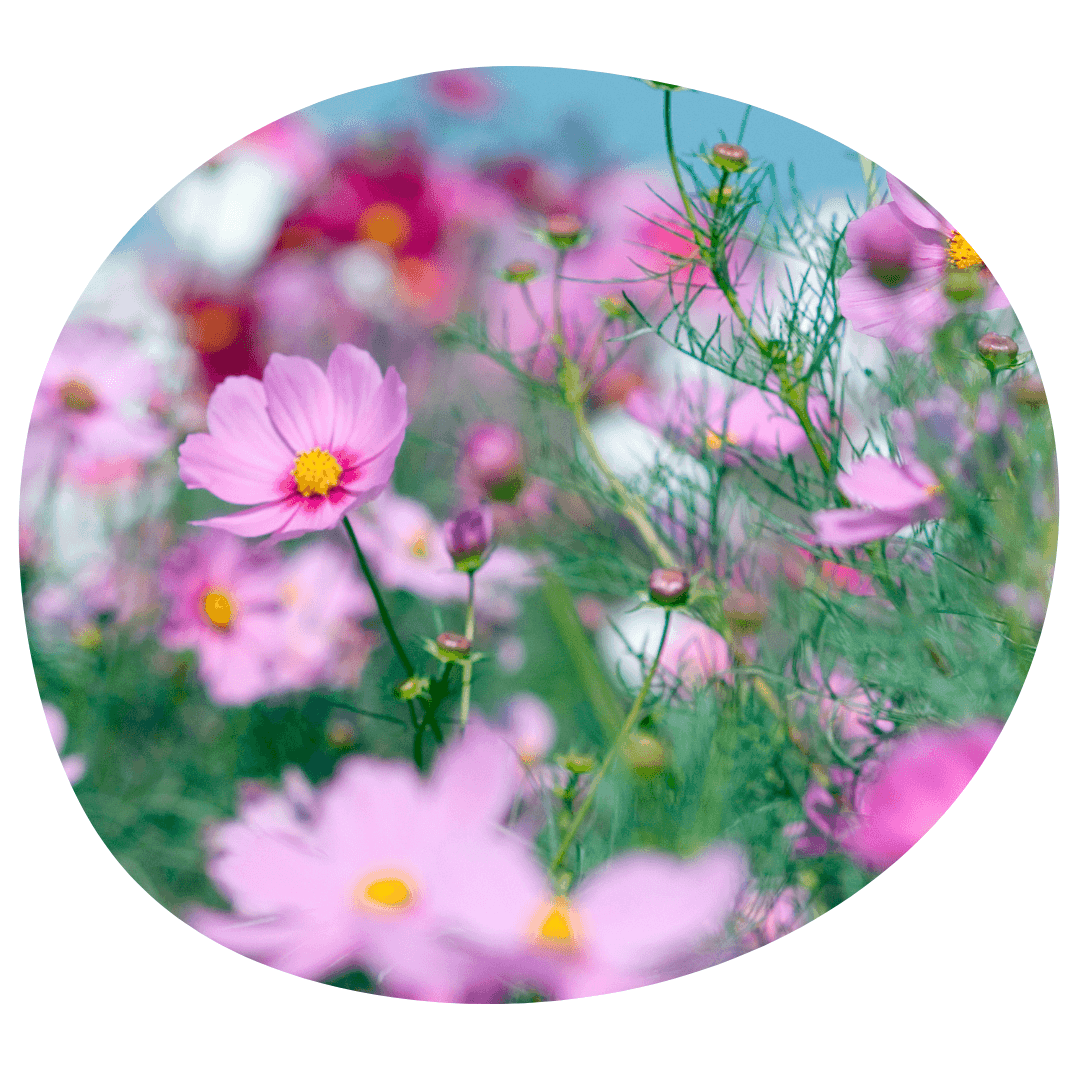How to Grow Cosmos
Growing Conditions
Cosmos are annual flowers that produce abundant sprays of colourful blooms. They thrive in full sun and are drought tolerant. They're a favourite of pollinators and attract many species of bees and butterflies. Cosmos are not picky about their soil as long as it is fertile and well draining. They can be planted in garden beds or containers, and are a must-have for any cut flower garden.
Starting
Direct sow your cosmos seeds after all risk of frost has passed in the spring. They will germinate well at soil temperatures between 10 and 25°C. Choose a location that receives full sun. Sow seeds shallowly, at a depth of no deeper than 1/4". If necessary seedlings may be thinned to around 1-2 feet apart after they sprout. Germination usually takes around 1-2 weeks, and flowers should appear after 60 days and continue until the frost.
Find our full guide to seed starting here.

Care
Cosmos are very low maintenance and require little care throughout the season, making them a perfect flower for amateur and expert gardeners alike. Do not over feed or over water, as this can lead to excess foliage growth and few flowers. Cosmos can handle dry weather and may not require extra water after they have sprouted, unless subjected to extended dought. Tall varieties will benefit from staking for extra support, especially if grown in a windy area. Deadhead old flowers to encourage more blooms and bushier growth. Cosmos will self-sow if allowed to go to seed in the fall.
Pests and Diseases
Aphids - Small green, black, or brown insects that feed on the sap of garden plants. You'll find them under leaves, at blossom tips, and in the joints of stems.
Flea Beetles - Small black beetles that feed on leaves and stems, leaving holes and discoloured patches.
Thrips - Tiny winged insects that leave patches of discolouration on leaves.
Powdery Mildew - White mildew on the top surfaces of leaves, starting as small spots and growing to cover the entire leaf.
Crop rotation, garden cleaning, and proper spacing between plants are the best ways to prevent problems caused by pests and diseases. Diatomaceous earth can be used to control crawling pest species, while sticky traps will catch flying pests. Row covers and insect netting can also prevent travelling pests from landing on your crops and causing damage. Ensure good drainage in your chosen planting spot to prevent problems with fungus and rot. Contact us for more specialized pest control methods such as beneficial nematodes.
Harvest
For the longest vase life, cut your cosmos flowers as soon as the bud has opened. Flowers will drop their petals quickly if harvested after they've been pollinated, so choose buds that are about to open or in the process of opening. Always use sharp, clean pruners when cutting flowers. Cosmos flowers will last around 5 days in a vase.

